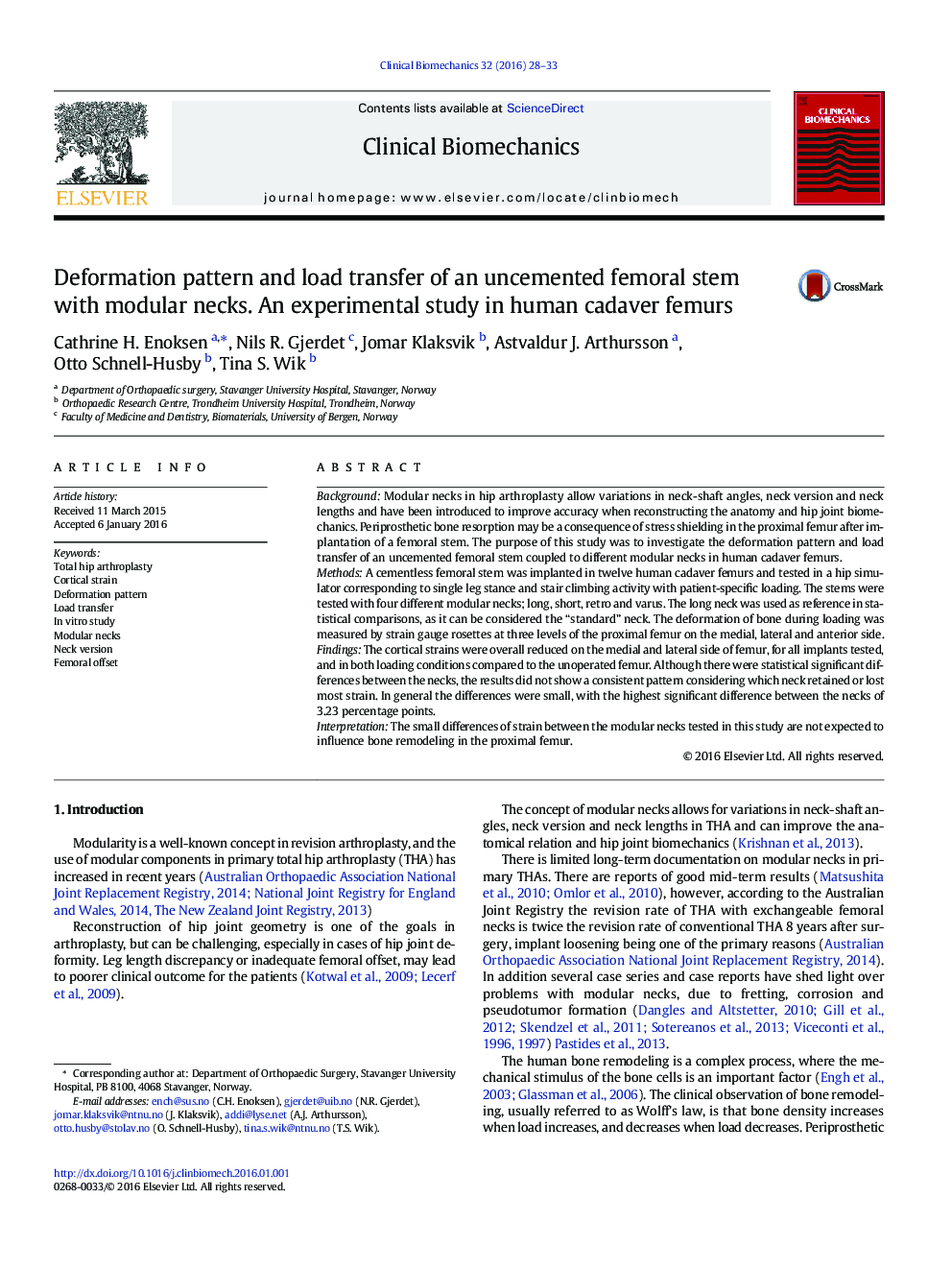| کد مقاله | کد نشریه | سال انتشار | مقاله انگلیسی | نسخه تمام متن |
|---|---|---|---|---|
| 6204596 | 1603746 | 2016 | 6 صفحه PDF | دانلود رایگان |
- 12 human cadaver femurs were tested in a hip simulator.
- Strain was measured with four different modular necks.
- Strain was reduced for all implants tested compared to intact femur.
- Small differences in strain between the necks.
BackgroundModular necks in hip arthroplasty allow variations in neck-shaft angles, neck version and neck lengths and have been introduced to improve accuracy when reconstructing the anatomy and hip joint biomechanics. Periprosthetic bone resorption may be a consequence of stress shielding in the proximal femur after implantation of a femoral stem. The purpose of this study was to investigate the deformation pattern and load transfer of an uncemented femoral stem coupled to different modular necks in human cadaver femurs.MethodsA cementless femoral stem was implanted in twelve human cadaver femurs and tested in a hip simulator corresponding to single leg stance and stair climbing activity with patient-specific loading. The stems were tested with four different modular necks; long, short, retro and varus. The long neck was used as reference in statistical comparisons, as it can be considered the “standard” neck. The deformation of bone during loading was measured by strain gauge rosettes at three levels of the proximal femur on the medial, lateral and anterior side.FindingsThe cortical strains were overall reduced on the medial and lateral side of femur, for all implants tested, and in both loading conditions compared to the unoperated femur. Although there were statistical significant differences between the necks, the results did not show a consistent pattern considering which neck retained or lost most strain. In general the differences were small, with the highest significant difference between the necks of 3.23 percentage points.InterpretationThe small differences of strain between the modular necks tested in this study are not expected to influence bone remodeling in the proximal femur.
Journal: Clinical Biomechanics - Volume 32, February 2016, Pages 28-33
